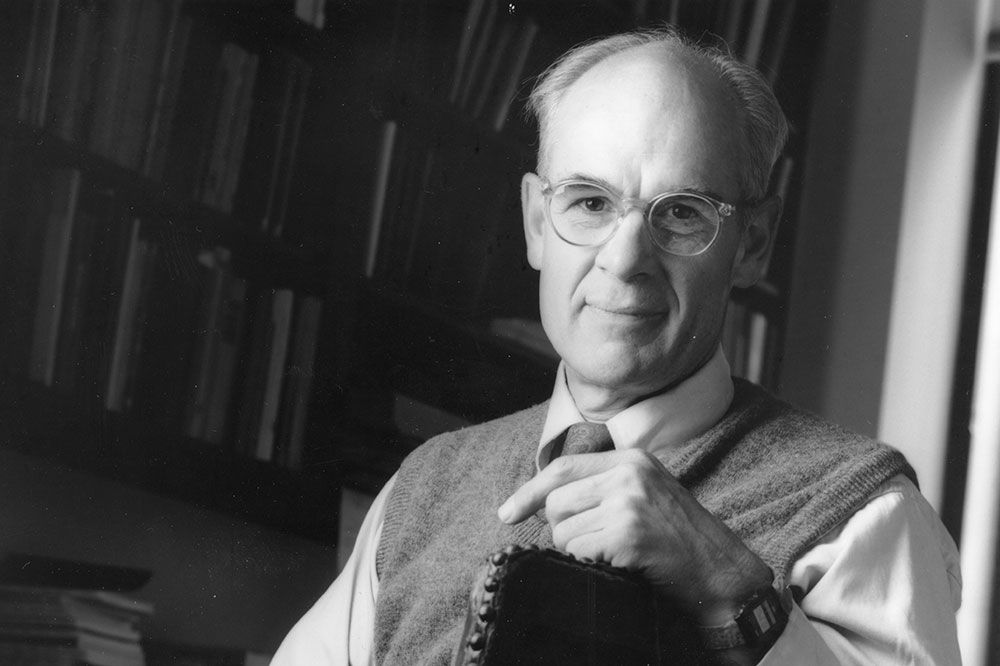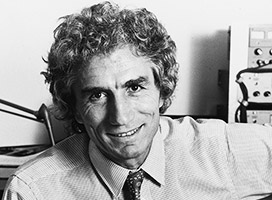Rockefeller mathematician Peter Sellers dies at 84
by STEPHEN ALTSCHUL

Peter H. Sellers, among the earliest researchers on DNA and protein sequence comparison, died of cancer on November 15, 2014, at the age of 84. An obituary was published in The Philadelphia Inquirer on November 25. Here, I offer a brief, personal perspective.
I first met Peter Sellers over thirty years ago, on May 28, 1984, to be precise. I was at the time a graduate student in applied mathematics at MIT, and was interested in finding a dissertation project in computational biology. The first comprehensive text book on sequence comparison, Time Warps, String Edits and Macromolecules: The Theory and Practice of Sequence Comparison, had just been published, from which I had gleaned the elements of this new field and the names of a number of its pioneers, including Peter. I learned that several would be speaking at a symposium planned for that spring’s AAAS meeting in New York, which I eagerly made plans to attend. The symposium had been organized and was being co-chaired by David Lipman from the NIH, who recently had published with John Wilbur a fast DNA and protein database search program. Among the meeting’s six speakers, I found Peter the easiest to approach, and he invited me to come by his office at Rockefeller University the following day.
A mathematician by training, Peter had first become interested in sequence comparison about a decade earlier, after attending a talk by the physicist Stan Ulam and solving a problem he had posed. Recently, Peter had struck up a collaboration with Bruce Erickson, a protein chemist interested in the synthesis of artificial peptides, who was a fellow researcher at Rockefeller University. My meeting with Peter was pleasant, but it did not shake loose any ideas for research projects. It was timed, however, so we could attend a lecture by Mike Zuker on the prediction of RNA folding, a reprise of his AAAS talk of the previous day, and we proceeded afterwards to the Rockefeller Faculty Club with a small group for lunch. There, I was seated next to Bruce Erickson, with whom I struck up a lively conversation. After a visit to his lab following lunch, he invited me to come work with him over the summer, a chance that I jumped at. During those months I was able to solve a problem he had been thinking about for a while, resulting in my first published paper and an invitation to join Bruce’s lab more permanently as a research assistant. I was able to arrange this with my thesis advisor, and spent most of the next three years with Bruce at Rockefeller, but frequently consulting with and inspired by Peter.
Peter’s early work in sequence comparison is probably best encapsulated in three papers that take a mathematically rigorous approach to sequence alignment. In the first, published in the SIAM Journal on Applied Mathematics in 1974, he defines a distance measure between sequences, which he proves to be a metric, and he also describes and proves valid an algorithm for calculating it. This is, basically, what is today commonly known as the Needleman-Wunsch algorithm, although a careful reading of Saul B. Needleman and Christian D. Wunsch’s paper shows that they in fact describe a different algorithm. It is really Sellers’ algorithm, or a related one by David Sankoff, that is currently used. Peter’s second alignment paper, published in 1983 with Bruce Erickson, describes semi-global alignment, which finds approximate occurrences of a short sequence within a longer one. His third paper, published in the Bulletin of Mathematical Biology in 1984, describes what can be understood as a more general version of the Smith-Waterman algorithm.
In brief, after the definition of optimal global alignment in the early 1970s, it took many years for practical definitions and algorithms for local sequence alignment to be formulated. Once this was achieved, local alignment served as the foundation for the development of rapid and popular heuristic protein and DNA database search programs. Peter took the approach of defining the concept of “local optimality,” and then described an algorithm for rigorously finding all and only the locally optimal local alignments of two sequences. When his algorithm is restricted to finding the single best such alignment, it can be shown to be equivalent to that of Drs. Smith and Waterman. The complete version of Peter’s algorithm was conjectured to run in time O(mn), and I was able to develop a modification that could be proved to do so.
Throughout my time at Rockefeller, Peter Sellers was a guiding light for my work with Bruce Erickson. Peter and Bruce made an unusual team. Bruce had the entrepreneurial spirit required of a modern lab head, with a constant need to write grants and raise funds. Peter was a much gentler soul, perhaps heavily influenced by the Philadelphia Quaker tradition. He was happy to work on his own, pursuing mathematical rigor, and was not focused exclusively on practical results. He was never a self-promoter, and his contribution to the field of sequence comparison is unfortunately frequently overlooked.
As Peter’s Philadelphia Inquirer obituary states, he had many interests beyond mathematics and science. He was descended from the Peale family of 18th and 19th century American artistic fame, and his wife and several of his children have strong artistic interests. Peter served for some time teaching in Africa. He and his family removed each summer to their rustic second home on Mount Desert Island, where I had the pleasure of visiting them several times. There, having spent many years hand-building a fine wooden sloop in a Pennsylvania barn, he enjoyed many more sailing it with his wife around the coast and islands of Maine. He was happy to be able to return to Maine this past summer, although his flagging strength had put an end to his sailing days. It was a privilege to have known Peter for the past thirty years. He was a true gentleman and a true friend.
Dr. Altschul is senior investigator at the National Center for Biotechnology Information, which is part of the National Library of Medicine at the National Institutes of Health. He is coauthor of the BLAST algorithm, a widely used computerized DNA and protein database search program.


